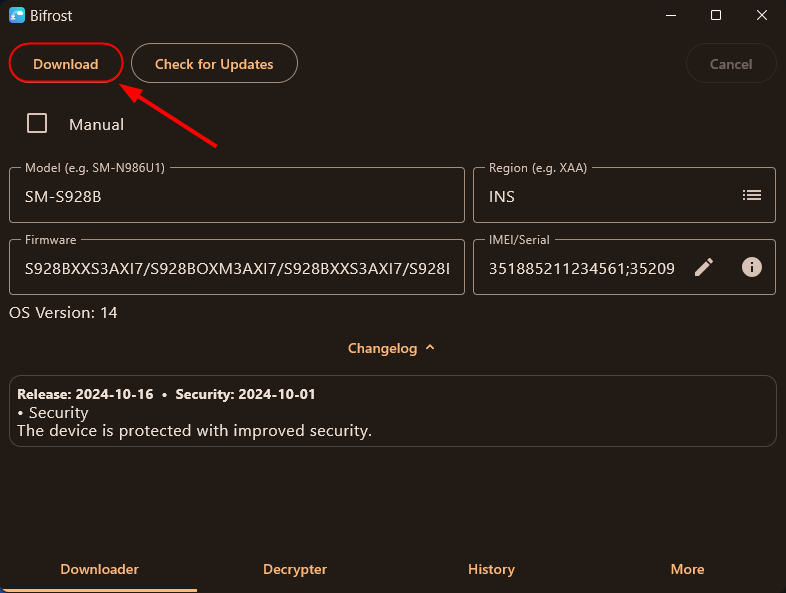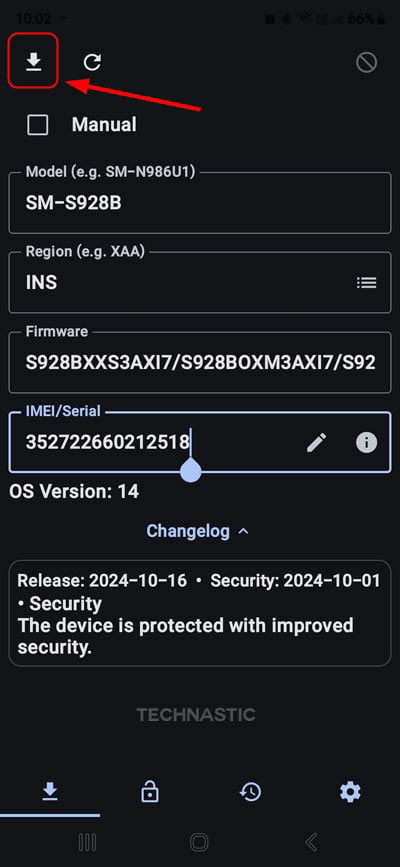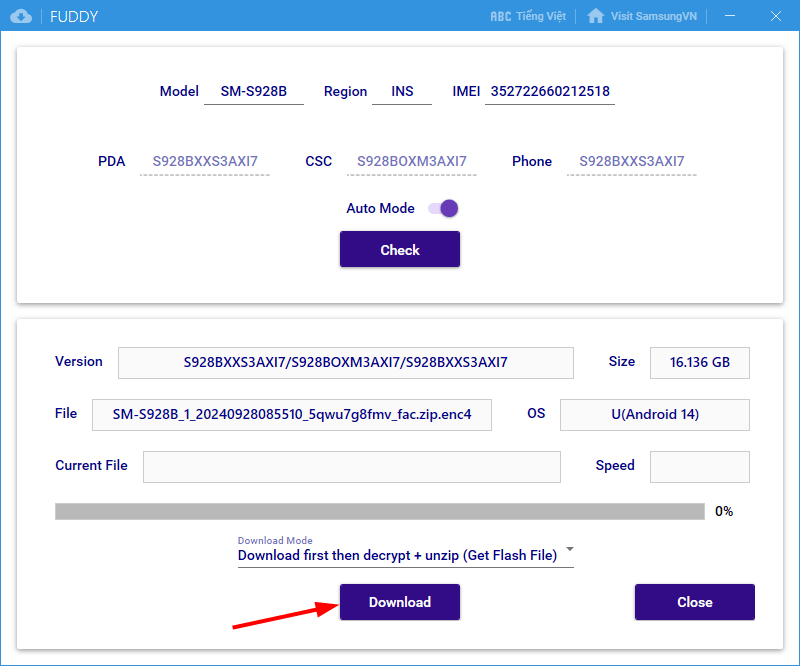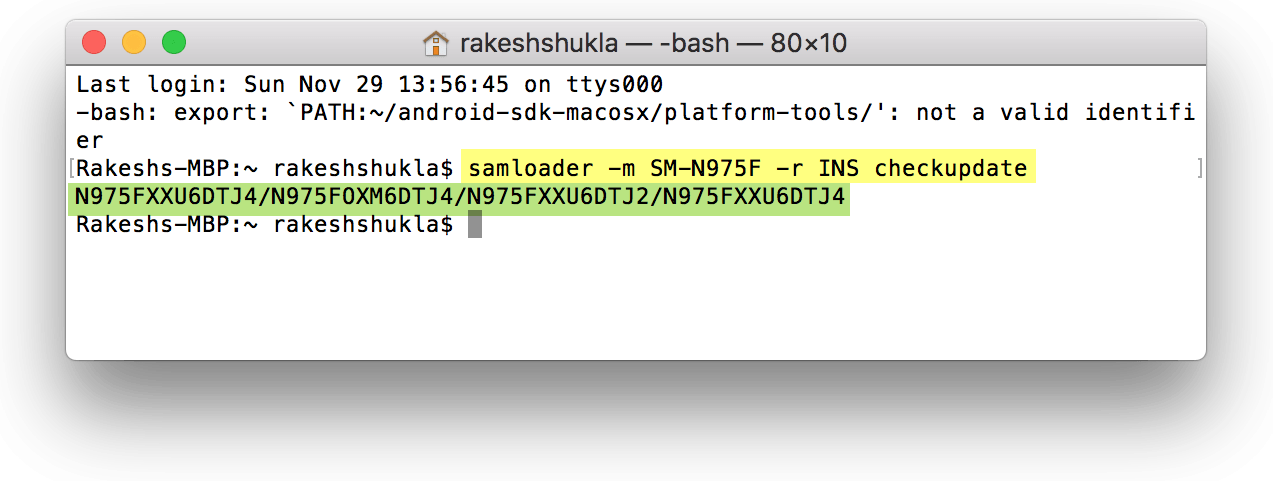There are several online firmware repositories from where you can download the Samsung Android firmware for free. Samsung firmware downloaders like Frija, Fuddy, Bifrost, Samloader, and SamFirm are even better solutions for those who want to download BL, AP, CP, and CSC binaries for Odin. Since there is no way to download the firmware files separately, you must download the full firmware to get all 4 binaries in a zip. Once you have the files, you can flash them using the official Odin tool.
BL, AP, CP, and CSC & Home CSC
An Android smartphone relies on components like the bootloader, data, vendor, key storage, EFS, user data, system, modem, kernel, and recovery. Samsung firmware files have MD5 and LZ4 encryption. Binaries like BL, AP, CP, and CSC contain all core elements and partitions.
- BL: The BL binary with .tar.md5 extension flashes the bootloader.
- AP: The full file of AP is ‘Android Processor‘. It is responsible for flashing the system partition.
- CP: CP stands for ‘Core Processor‘. This binary contains the ‘modem.img’.
- CSC: The full form of CSC is ‘Consumer Software Customization‘ or ‘Country Specific Code‘. The CSC component contains customizations related to geographical location, APN settings, carrier branding, etc. Flashing the CSC (only) binary will wipe all the apps, data, settings, and files, and your device will be reset to factory status. The CSC binary contains the Samsung PIT file.
- HOME CSC: This binary is the same as CSC but does not wipe your phone’s data during the firmware update.
Samsung Firmware Downloaders
There are many websites and file hosting services where you can grab the firmware for your Samsung device. Below, we’ll check some of the best Samsung firmware downloader tools.
1. Bifrost
Bifrost is the latest addition to the Samsung firmware downloaders and by far the best tool. It’s a cross-platform tool based on Samloader but it has a GUI. Bifrost is available for Windows, macOS, Linux, and even Android.
Bifrost has a clean and user-friendly interface and requires the Samsung Galaxy device’s model number and CSC to look for the latest firmware update. Since Samsung firmware is encrypted by default, the tool automatically decrypts it when the download is complete.
Download the latest version of Bifrost for Windows, Linux, and macOS, launch the tool, enter the model number and CSC, and fetch the firmware. You can also use Bifrost on any Android device. Just download the Bifrost APK, sideload it on your phone, launch the app, and fill in the required fields to download the Samsung firmware.
2. Frija
Frija is the best option to download Samsung firmware for free without any speed cap. It’s a simple tool with a clean and user-friendly UI. Frija supports auto and manual modes. In Auto Mode, the tool automatically detects Samsung devices. However, you have to enter details like the model number, CSC, IMEI, and serial number to check for the firmware update in the Manual Mode.
If the provided details are correct, Frija will download the firmware. Refer to our full-fledged to download the latest Frija and learn the steps to use it.
3. Fuddy
Fuddy is yet another firmware download tool for Samsung Galaxy devices. Its user interface reminds me of the old version of Frija. Fuddy is available only for Windows. Please, refer to our detailed tutorial to learn to use Fuddy to download firmware for your Samsung device.
4. SamFirm
SamFirm is the short form of Samsung firmware. It used to be the only tool until Frija surfaced. Even though the developer has discontinued the development, SamFirm still works. This firmware downloader tool is not as user-friendly as Frija but it’s the only available alternative to the latter.
You can download the Samsung firmware for your Galaxy phone or Tab with SamFirm in just five steps as shown in the screenshot below.
- Download SamFirm and extract the downloaded zip.
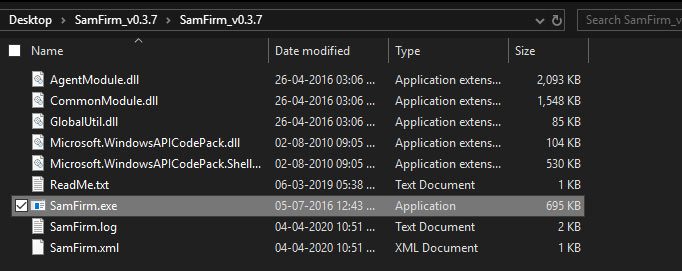
- Open the extracted folder and double-click SamFirm.exe to launch it.
- In the box next to Model, fill in your Samsung device’s model number. You can find the model number by going to Settings > About phone.
- In the Region field, you need to fill in the CSC of your device. Read my tutorial to find out your Samsung phone’s CSC.
- Now click the Check Update button.
- SamFirm will fetch the details of the latest firmware available for your device and show its file name, AP, CSC, and CP versions of the software update, and its size.

- Finally, click the Download button and choose the location where you want to save the file. When the firmware file is downloaded, unzip it to get the BL, AP, CP, CSC, and HOME CSC files for your Samsung device model.

5. Samloader (Mac, Windows, Linux, Android)
Samloader is a great Frija alternative as it’s a versatile tool that will help you download Samsung firmware on macOS, Linux, Windows, and even an Android device using a terminal emulator app. It is a Python-based script that can check for the latest firmware for your Galaxy device via the Terminal (macOS) or the Command Prompt (Windows) and download it. Head to my detailed Samloader tutorial to learn how to use this tool on Mac, Windows, and Linux.
Samsung Firmware Download Websites
1. Sammobile
Sammobile has been one of the oldest and most trusted sources to download the latest Samsung firmware for all Samsung Galaxy devices. The website provides free firmware download to its members, but the speed is slow. To enjoy a fast download, you’ll have to get a monthly plan ranging from €6.50-€250. I don’t think it’s wise to use Sammobile when we already have great options like Frija and Samloader.
2. SamFW
SamFW is another great website that offers free Samsung firmware downloads. Visit the website, enter your phone’s model number, and select it. You’ll have a list of available firmware files for your device.
3. SamFrew
SamFrew is another option for those who don’t want to use a Samsung firmware download tool. It’s cheaper than Sammobile and Updato. Just like others, it also offers slow Samsung firmware downloads for free. To get the firmware from 100 Mbps/100o Mbps mirrors, you have to pay a one-time fee of $8.99/$22.99. My experience with SamFrew was better than all other websites listed above.
Install BL, AP, CP, and CSC Files with Odin
Now that you have the firmware files ready, check out the following steps to use Odin to flash Samsung Galaxy devices.
- Download Samsung Odin and extract the zip.
- Make sure you have already downloaded the correct firmware zip and extracted it on your Windows desktop
- Download and install the Samsung USB driver on your computer.
- Now turn off your Samsung device and boot it into the Download Mode.
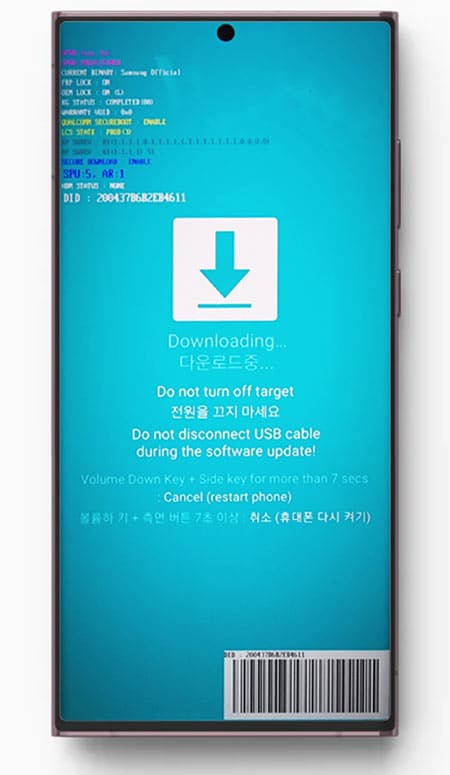
- Connect your device to the computer. Make sure to use the original Samsung USB cable to avoid any issues. When Odin detects your device, the ID COM port will be highlighted in blue.
- Open the firmware folder that contains the 5 binaries with .tar.md5 extension.
- Click the BL button in Odin, navigate to the firmware folder, and add the file with “BL_” in its name.
- Then click the AP button and select the firmware binary with “AP_” in its name AP will take a while to load in Odin because of its heavy size. Don’t panic if the Odin window freezes temporarily after selecting the AP file.
- Similarly, add the CP, and CSC (plain CSC if you want a clean installation and HOME_CSC if you don’t want to wipe your device data) files to the corresponding fields in Odin.
- Finally, click the Start button to initiate the installation.
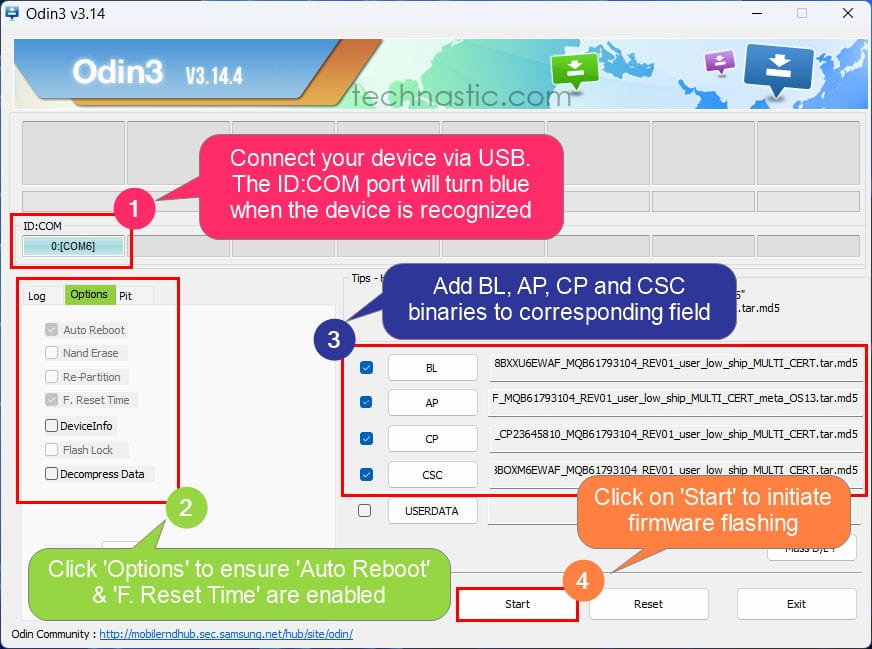
- Samsung firmware files might take 3-5 minutes to install. So, be patient and calm.
- Finally, you’ll get PASS!! message in Odin. It indicates that Odin has flashed the firmware file successfully.
- When the firmware is installed, your Samsung device will reboot automatically.
You have successfully installed Samsung firmware on your Samsung Galaxy Device.
Being an experienced Samsung user, I recommend Frija and Samloader because they allow free high-speed downloads directly from Samsung FUS. It’s pointless to pay a 3rd-party website to get Samsung firmware.
Read Next: List of the Working Samsung Secret Codes
